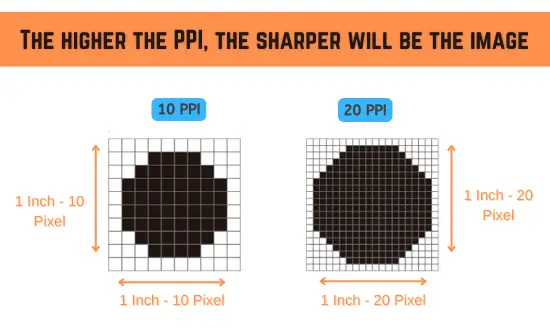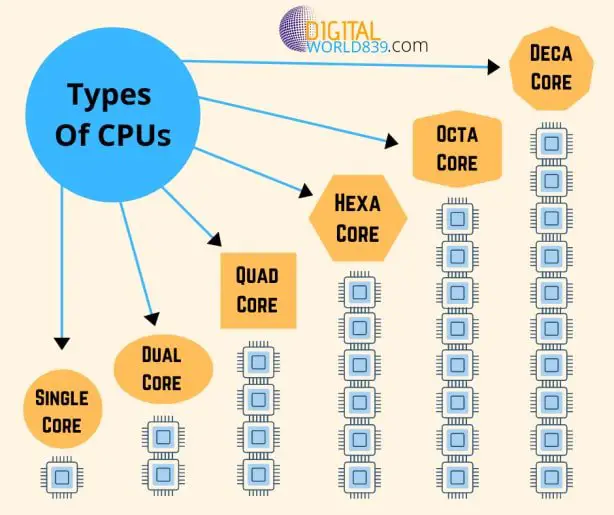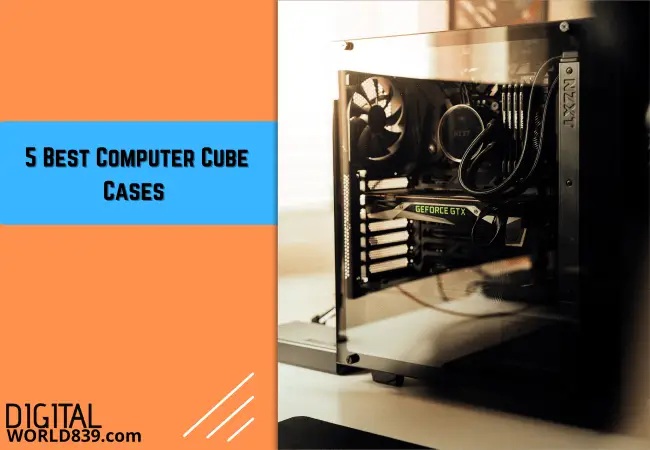While looking for a good computer monitor, you will notice the price of computer monitors so expensive than TVs. In recent years, computer monitors have become more competitive with TVs.
How be a smaller 27’’ 1440p monitor more expensive than a bigger 4K Smart TV? How is that justified? And since the TV is cheaper than monitors, will there be a downside to using it instead of the monitor?
Read on ahead; I will gonna reveal the reasons why monitors turn out to be cost more than TVs, even though both televisions and monitors offer similar sizes and resolutions in some cases.
11 Reasons Why Monitor is More Expensive than TVs?
1. Designed for Multiple Purposes
The number one reason that makes monitors so expensive than TVs is their application. The monitor is designed for diverse purposes such as gaming, visual projects, productivity, video editing, photography, etc.
It is capable of supporting numerous photo and video formats. This can be very inconvenient if you are working with media-specific software that supports video and image formats outside the realm of television standards.
In contrast, TVs are assembled with a more generic intent and capable of reproducing only the most common formats for entertainment and news purposes.

Moreover, the monitor has a HDMI, and USB ports supporting the keyboard, mouse, Internet connection, and other desktop devices. Therefore, they are built with additional standards than televisions to take care of more specific purposes.
Thus, if you need one for a specific use, you will have to pay similar (if not more) prices for monitors.
2. Monitors Typically Last Long than TVs
Apart from diverse purposes, monitors are favored for being long-lasting. One thing you might have noticed about monitors is that they aren’t replaced often. And if you ask me, I have been using the same monitor since my last 3 PC upgrades in the past seven years.
TVs don’t usually last as long as monitors. This is partly because, besides entertainment, they are also used as a piece of home décor. People often like to keep up with trends with the latest technologies, and manufacturers are well aware of it.
A computer monitor consumes less power than a TV and has fewer complex structural elements, which is why the functionality of computer is lower and very efficient in converting electricity into light.
Note – On average, they last for around 30,000 to 60,000 hours, which equates to 10-20 years at approximately 8 hours of usage daily. In addition, the individual components inside the monitor (such as the main circuit board) have their sole warranty.
Most monitors come with a warranty of at least three years – for example, the Asus VP28UQG has an official warranty of 3 years.
TV warranties have anywhere between 6 months to 2 years. Since they will eventually be replaced sooner, manufacturers provide attractive prices by using not as durable components as monitors.
In almost all cases, the service lifespan of a monitor is longer than a TV with identical technical characteristics. So, what makes computer monitors cost more is their durability because of more resistant parts than TVs. And since they will be lasting years, their prices are higher accordingly.
3. Latency And Input Lag
This is one of the notable reasons that make a TVs cheaper than monitors. Latency or input lag is the time taken between your monitor receiving a signal and displaying it. This includes the delay in response between pressing a key on your keyboard and how quickly the corresponding character appears on the screen.
The longer the delay, the lower the responsiveness of the screen. Monitors boast an extremely small delay of 1ms, which is now the norm for competitive gaming. Regardless of gaming, monitors are still developed to have a latency of 1ms, 2ms, but basically less than 6-10ms.
For instance, Asus VG278Q monitor with 27’’ screen has an input lag of only 1ms. If you compare that with some higher-end TVs – such as the Samsung M4500 – it can still have a high latency of 46.7ms.
They are almost the same screen size, yet such a big difference in latency. That is because TVs are designed mostly for entertainment, where latency is not a matter. You can save bucks by buying a TV. These purposes do not benefit much from a lower latency or input lag.
4. Pixel Density
What might seem somewhat opposite to logic is how a 4K TV – a desired feature – be cheaper than a 1080p monitor? Shouldn’t it be the other way around? Well, there’s a simple explanation for it as well in terms of pixel density or pixels per inch (PPI) as you can in below image.

PPI is responsible for delivering a sharper image. The higher the PPI, the sharper will be the image. Since you are going to be sitting close to a monitor, you need a higher PPI to properly discern small characters and read text accurately.
TVs, on the other hand, has a lower PPI. You would have noticed letters are harder to read on TV than on a monitor. This only gets worse as you get closer to a TV. Both monitors and TVs can display resolutions up to 8K. However, it’s the PPI that becomes the deciding factor in their pricing.
For example, a 1080p 55″ TV would normally have a 44 PPI (pixels per inch). A 24″ monitor, on the other hand, has a higher PPI of 91 which essentially determines the cost of this peripheral device of computer.
5. Refresh Rates and Screen Tearing
Refresh rate refers to how fast a screen can refresh the picture on the screen. A screen with a 60Hz refresh rate would update 60 times in a second to display the latest image. 120Hz would refresh 120 times in a second to display a more mesmerizing view. So, the display is much smoother at higher refresh rates.
These numbers seem quite high for a human eye, but the results are easily noticeable. And once you go 120Hz, you won’t be able to satisfy yourself with 30 or even 60Hz (curse of knowledge, I guess).
Monitors with a screen frequency of 120 Hz are cheaper than TVs with a similar rate. In addition, on many TVs, the frame rate is increased due to the accelerated flashing of the backlight or the insertion of adaptive images.
In movies, these effects give good results, but in games where the dynamics are completely improvised, this will seriously affect the quality of the graphics.
While screen tearing happens when the monitor is not in sync with the graphics card. For example, if your graphics card is set to 60 Hz, but your monitor is 75 Hz, you will see screen tearing.
The high refresh rates are rare in TVs, whereas 144Hz has become the norm in monitors. Even in gaming, 240 and 360Hz aren’t uncommon. NVIDIA is pushing the boundaries by releasing the World’s Fastest Gaming Monitor with 500Hz in May 2022, powered by G-Sync.
G-Sync and AMD FreeSync are also some of the monitor features to prevent screen tearing and ultimately justify their higher prices than TVs.
6. Accurate Colors
Monitors are intended to display accurate colours. This is an absolute must-have feature for photographers, video editors, and graphic designers. TVs are designed to have a more eye-catching cinematic appeal, especially in factory-enabled settings.
If you switch the TV display to adapt for gaming or PC connection, you will have to mess around in not-so-intuitive settings – which an average person like me wouldn’t bother to give 2 seconds of thought.
Furthermore, as TVs are designed mostly for entertainment purposes, they can produce deeper blacks or higher contrast. These produce crispier images. However, that is usually not what the picture is expected by the computer user.
Monitors are often made for professional media work like video and photography, They support a wider color gamut and, sometimes very importantly, your choice of color gamut. Hence, If you are seeing expensive monitors then they are probably meant for gamers or professionals people who need color accuracy for their work.
What Else Makes Monitors More Expensive Than TVs?
Many factors influence the pricing of monitors having a higher price than TVs. Here are a few more summarized for you:
7. Ultra-Wide Aspect Ratios
TVs are mostly limited to 16:9, while monitors types have more versatile aspect ratios. Along with 16:9, you can easily find monitors with aspect ratios of 21:9, 32:9, and even higher.
The aspect ratios improve productivity, and user experience to have an immersive feeling during gaming, even most comes in a curved shape.

8. Blue light filter technology
Too much exposure to blue light may lead to eye fatigue, headache, and even insomnia. By integrating blue light filter technology, this output device can be effectively shielded from the blue light and protect users’ eyes from possible harm.
9. Monitors support progressive frame scanning
Most monitors support progressive frame scanning. This technology is more efficient for displaying videos and animations. Progressive scan is not available on all budget TVs. Instead, interlaced scanning is used, which negatively affects the image quality.
10. Open to Marketing Opportunity
Since you need a monitor for your digital computer setup, it is vulnerable to marketing strategies. Because clever marketers know that your setup is incomplete without a monitor, they can get away with higher prices.
TV manufacturers cut their manufacturing costs to offer competitive prices (a part of why TV prices are lower too). Moreover, TVs are purchased in higher quantities than monitors, so it’s easier to sell TVs cheaper for a profit than monitors.
11. Some Monitors Are Intended for A Higher-Budget Market
Since finding a GPU that can push 4K resolution at 120Hz would need a hefty budget, the RTX 3090, a high-end GPU capable of achieving such stats, has gone for a chunky $2,000. Because you need better machinery to use such components, monitors likewise appreciate an elevated value.
Forget the TVs and Buy the Monitors?
With so many benefits of monitors over TVs, you should just forget about TVs and buy the monitors? Not so fast! TVs have their own niche where they shine the best. Here are some of the pros of buying a TV.
Are Cheap Monitors Bad?
No, it’s not bad; the most significant difference between the cheap monitors and the expensive ones is the refresh rate and the response time. Inexpensive monitors are just suitable for everyday use. We live in the era of costly stuffs. But not at the expense of the quality.
I have tried researching inexpensive monitors, and I didn’t find any critical issues; even the low-budget monitors have enough features.
If you are on a tighter budget, the good news is that you can buy niche-specific monitors. For example, if you are going to be watching many movies or tv shows, you can buy 4K 60Hz monitors for as low as under 250 bucks.
Going to be competitive gaming and need higher refresh rates? 1080p 120Hz monitors also sell as low as $250.
You have to figure out your absolute must-haves in a monitor, and you can buy incredible monitors. For instance, you don’t need a sophisticated frame design on your monitor – a reason for the high cost of some monitors.
Tip – But buying from a reputable brand, a cheap monitor, will last you years until you replace them, most likely not due to malfunctioning but because of newer technology.
Conclusion
With the exclusive features that almost every monitor comes equipped with, their prices turn higher than the average TVs. Higher refresh rates, colour accuracy, low input lag, greater lifetime, and a higher warranty are only some of the reasons that justify the higher prices of monitors.
On the other hand, TVs are intended to provide an enhanced cinematic experience. They usually have a larger screen size, can hit better contrasts, and display deeper blacks.
This trend is absent in monitors, and they can easily last a decade. With many additional features, and them being a vital part of a computer setup – without which you cannot use your computer – monitors tend to be more expensive than TVs.
Hope you find this article insightful! And figured out the reasons ‘Why are monitors more expensive than TVs?’




